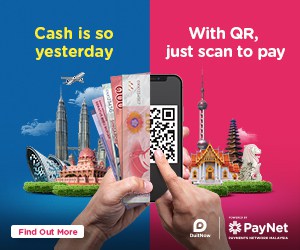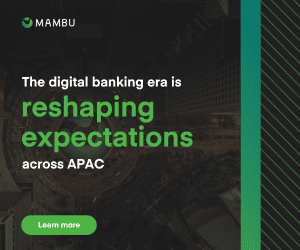As consumers behaviors shift to becoming increasingly digital, the financial services industry is forced to cater to changing nature of its customers. Regulators are also taking notice of the shift and gaps within the system and as a result, started issuing new guidelines for virtual banks.
Similarly in Malaysia, Bank Negara recently announced a draft framework where they are looking at issuing 5 virtual banking licenses.
To discuss this changing landscape we were joined by Khairil Abdullah, CEO Axiata Digital, Navin Rajagopalan, Co-Founder, BigPay, Anand Subbaraman, General Manager, Retail Banking, Finastra, and Marcus Von Engel, Partner, Malaysia, Financial Services Consulting Leader, PwC.
We sat down to discuss the many ways virtual banks would affect the way Malaysians interact with their bank.
The effect of MCO on virtual banking
Khairil from Axiata Digital tells us that the number of physical payments has drastically reduced during the MCO. Non-essential businesses have closed and consumption has decreased by 48%. Their e-wallet platform Boost has seen lower revenues due to the decline of in-store payments, however, their lending platform Apsirasi has actually been growing thanks to its micro-payments and micro-insurance launch. Khairil explains they’re seeing a mixed bag of growth and decline.
Navin is confident that SE Asia will bounce back faster than the rest of the world, and Marcus says that one should not let a crisis go to waste; there is still a tremendous amount of opportunity within Malaysia. According to Marcus, their recent PwC study indicated that there are three main reasons Malaysia offers a lot of opportunities to virtual banks:
- Malaysians are the most likely to go digital
- They are open to sharing confidential information
- They are ready to switch banks.
Having said that, Anand from Finastra does believe fintech post-pandemic will be different: there will be new patterns, people may not be so keen to travel and consumption may not bounce back as quickly as expected. So far, it’s hard to tell in what way the MCO has impacted the way Malaysians bank.
The gaps filled by virtual banking
The issue with incumbent banks is that a large segment of the population is left underserved and underbanked. Most customers don’t have anything beyond a savings account, implying a lack of engagement and financial inclusion. Khairil believes that virtual banking will work as a bridge to the unbanked and could also help consumers invest, budget, or save better.
Digital banking encourages both individuals and SMEs to rethink the relationship they have with their bank and look for alternatives that are more fitting. For example, eKYC technology means individuals can open a bank account with just a mobile phone and identification documents – no need to head to a branch.
By including education and training into a financial product, fintechs can cater to a much larger segment of the population. Virtual banks will lead the way to financial inclusion, and as Marcus says, this may also encourage Malaysian incumbents to change. This is already apparent in Hong Kong, where banks are removing fees and multi-currency cards. Virtual banks will not only shape consumer habits, but also traditional banking habits.
Addressing the non-digitally native
We’ve established that virtual banks will serve as a guide to the underbanked population, and will encourage Malaysians to have a stronger relationship with their bank. But what about those that do not interact with digital on a day to day basis? Can virtual banks bridge that gap?
With COVID-19, the baby boomer population and non-digitally savvy have been forced to adapt and build digital skills. Mom and pop stores and street hawker vendors are having to move away from cash and look towards contactless options due to health and safety reasons. Covid has accelerated this trend towards digital adoption, with boomers learning how to order online, accept digital payments and pay with a phone. In order to cater to this population, banks need to reimagine consumers’ financial experiences and consider untraditional consumer engagement routes.
Anand makes the point that in order for non-digital natives to adopt digital technologies, virtual banks need to focus on an incredibly simple user experience. Marcus quotes a PwC survey that states that the over-55 population is more likely to switch banks since they are retired and may not have a strong relationship with their bank. This offers a huge opportunity for Fintechs to educate retirees and offer incentives to switch.
On financial inclusion, Navin explains that being educated does not mean being financially literate. Translating an app from English to Bahasa does not fix the fundamental problem – instead, it comes down to access. Users need to be educated and also need to learn how to onboard the product. The user experience should be incredibly intuitive. This is why it’s so important to understand the difference between digitising a bank and creating a digital bank; a digital bank requires a complete transformation of the definition of what a bank is. Virtual banks need to think tech first, and then banking.
Moving towards consortiums
Virtual banks have a great proposition and are serving as an incredibly important bridge for the correct customers. But are they sustainable? Can virtual banks find the money and drive down customer acquisition?
All panellists agree the future is in consortiums: e-wallets will partner up, banks and fintechs will share information and platforms will be the norm. This “flat” ecosystem means that costs will be drastically lowered, security will be higher, and consumer data will no longer be siloed. This will encourage Malaysians to see banking as something that not only involves a bank, but a whole array of industries and services.
Virtual banking offers a new kind of banking that encourages financial inclusion, a flatter ecosystem and more intuitive user experiences online. This will change Malaysians bank in ways that are still being understood. Nevertheless, the objective remains to foster strong relationships with banks and offer services to the underserved.







